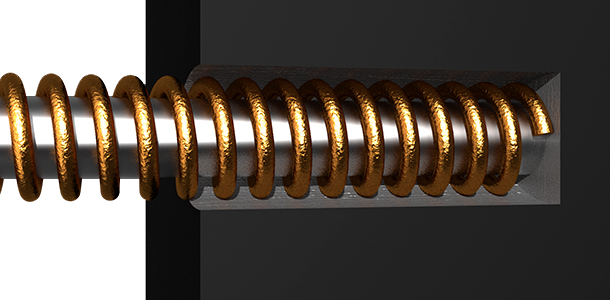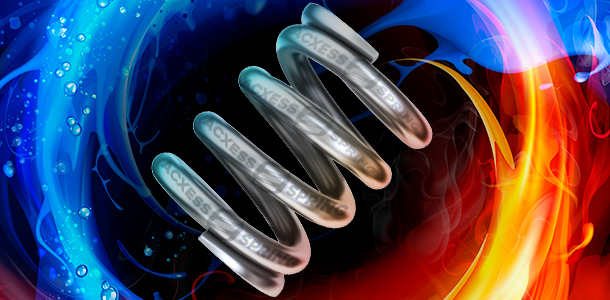What Affects the Life Cycle of a Spring?
There are several factors that can affect the life cycle of your springs. One main factor is exceeding your spring’s elasticity and load limits. Other factors that will affect your spring’s fatigue life are its environmental surroundings and any friction as well as the impact it is submitted to.
Exceeding your spring’s max safe travel or max safe load is the main reason it can fail and take a permanent set. A spring isn’t always capable of traveling down to solid height. If your spring has a tight coil index or a small number of coils, it may be under a lot of stress. Having a stressed spring will put it at risk of not compressing as far as you’d like. To avoid this from happening, you can make a few adjustments as shown in the force chart below.
| Less Force | More Force |
|---|---|
| – Wire Diameter | + Wire Diameter |
| + Outer Diameter | – Outer Diameter |
| + Coils | – Coils |
| + Free Length | – Free Length |

When a spring goes inside a hole or over a shaft, there must be clearance between the spring’s diameters and the walls of the hole or shaft. If your spring is really tight against those walls, there will be friction when it travels. This will wear out the wire and lessen the spring’s force thus causing either a permanent set or risk of breakage.

Environment is also very important to your spring’s design. Picking the wrong material type can definitely cause your spring to fail. We have a page on the properties of common spring materials. You can visit this page to confirm that you’ve selected the correct material or use the information to select a material type. Be sure to take into consideration the temperature and humidity your spring will be exposed to, as well as any magnetic fields surrounding it.

Your spring’s life cycle is affected by all of these factors. There are specific formulas used to calculate the approximate life expectancy of a coil spring. Feel free to contact our engineers and sales team for further help on calculating the life cycle of your spring.





